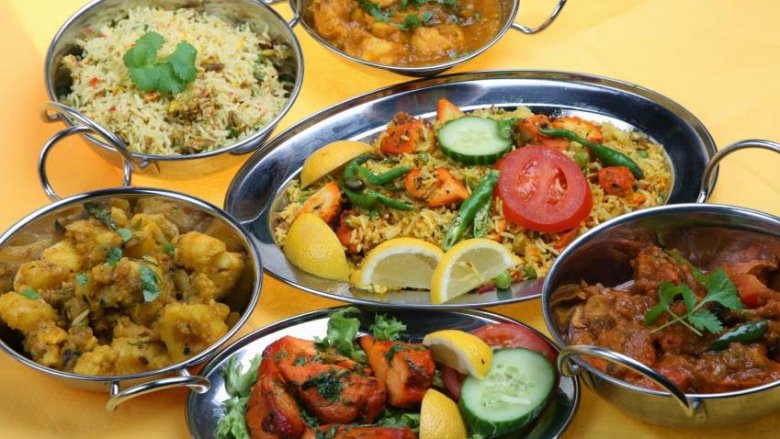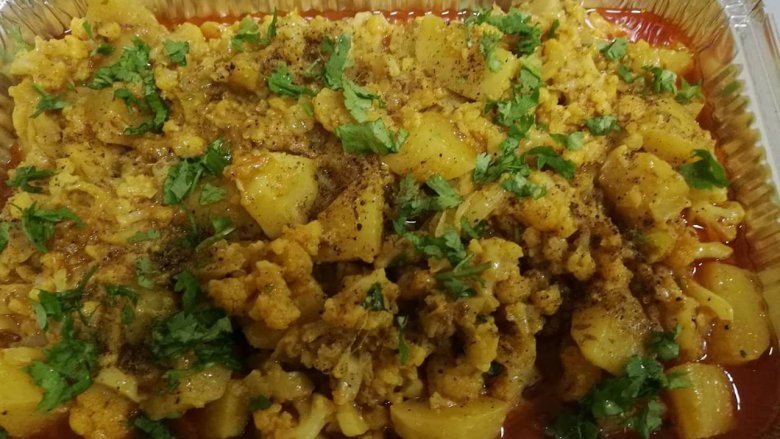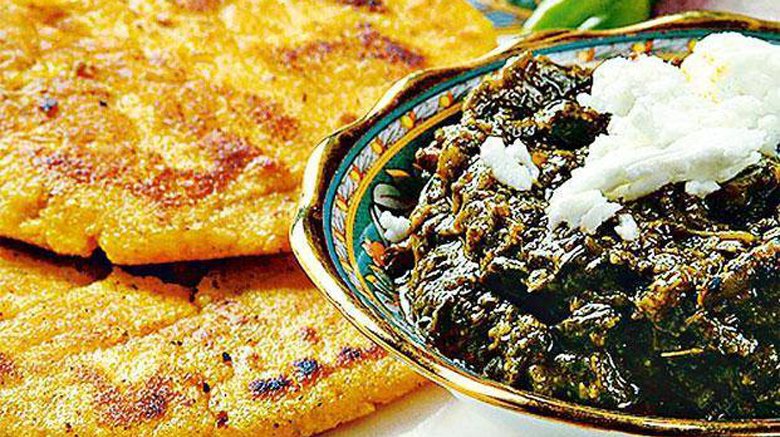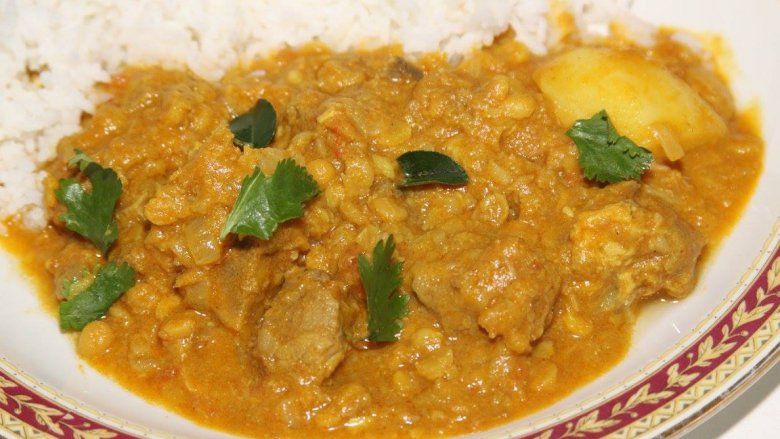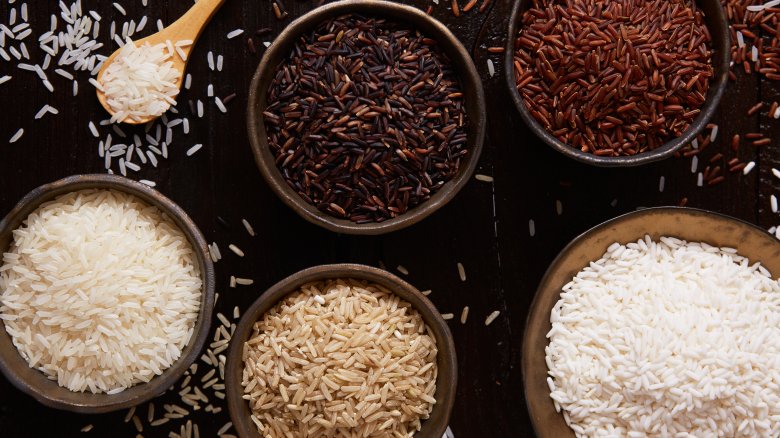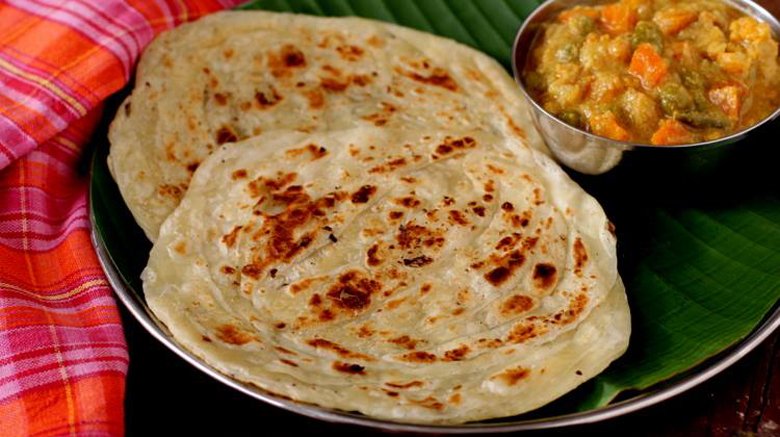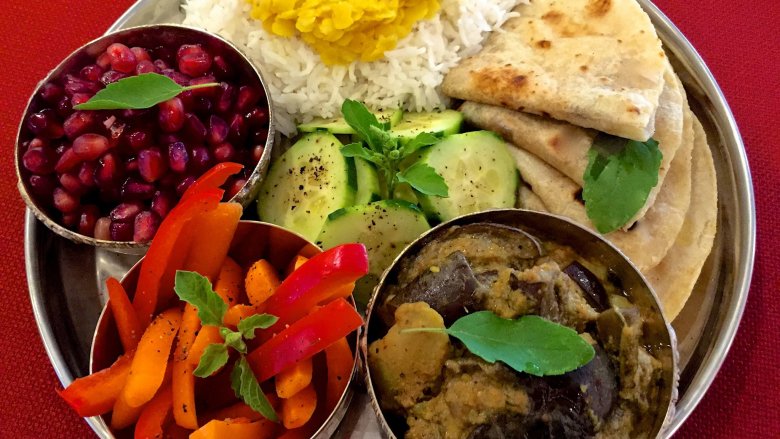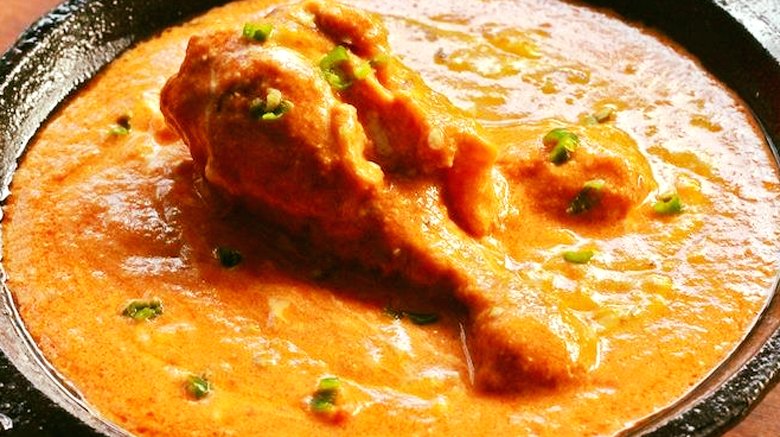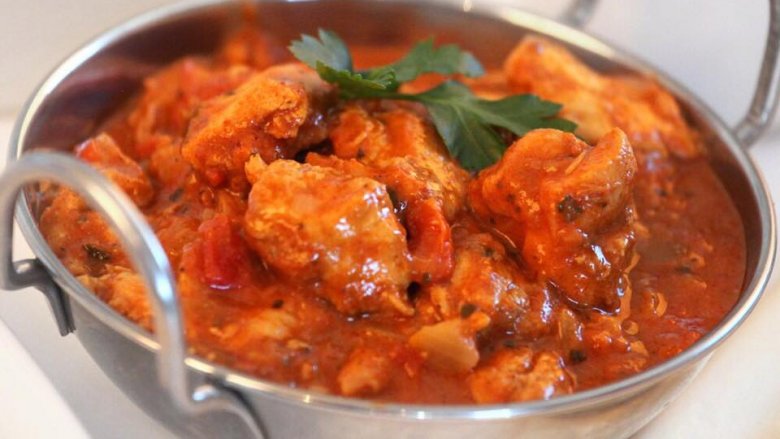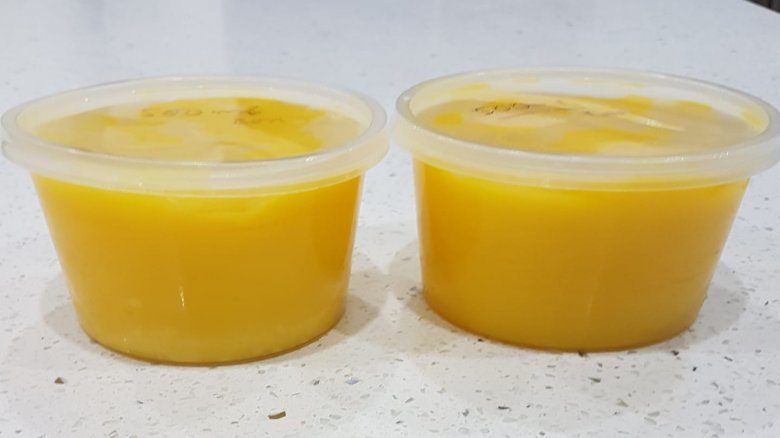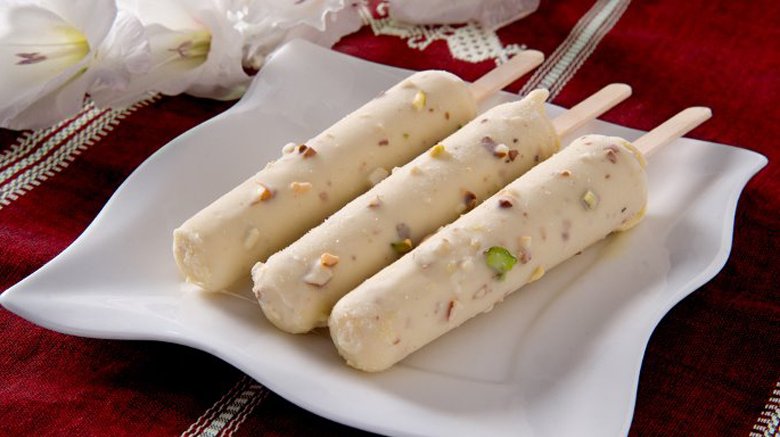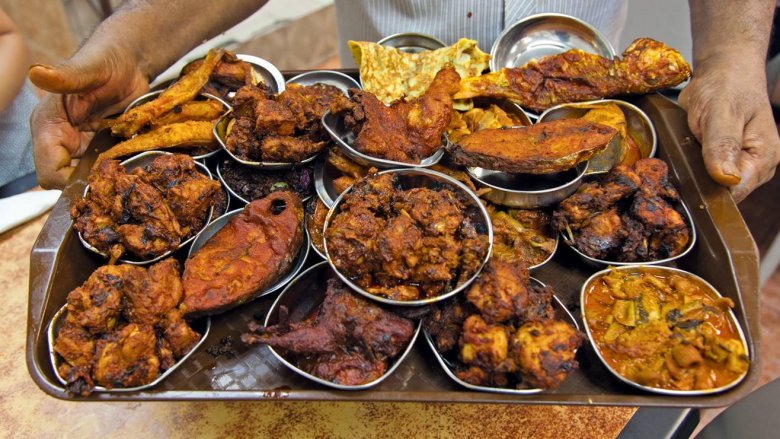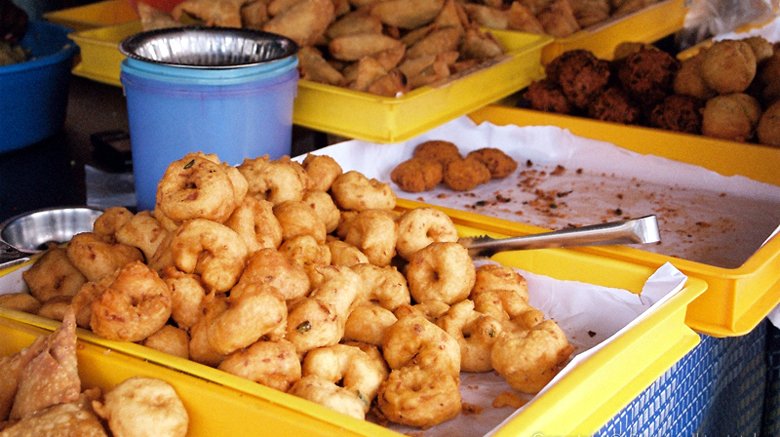Indian Food Myths You Probably Believed
With thousands of Indian restaurants in America, more and more people are learning about all the delicious dishes India has to offer. You'd expect many people would be knowledgeable about this tasty cuisine. But despite the fact a love for this unique fare is growing in the U.S. and around the world, Indian food is often misunderstood by the masses.
Authentic Indian meals are made from scratch and use a vast array of fresh ingredients and aromatic spices. Traditional Indian cooks typically adhere to the ancient Ayurvedic principle which says every meal must contain six tastes: sweet, sour, salty, bitter, pungent, and astringent. Because of this, Indian dishes feature deep, complex flavors, unique textures, and vibrant colors. Indian food is generally just eaten with your fingers or by using flatbreads as your utensils. What do you know about Indian cuisine? Let's explore some common misconceptions and myths about Indian food.
All Indian food is hot and spicy
Yes, Indian food can be referred to as spicy (it contains spices), but that doesn't mean it's "spicy hot." Many Indian dishes are actually mild, such as saag (more about this dish later) or aloo gobi (a cauliflower and potato dish). Also, a good Indian restaurant will make your food to order from scratch. In the U.S., your server may ask how spicy you want your dish, and let you decide.
The heat in Indian cuisine comes from chilies (such as cayenne peppers), which can be omitted altogether or added to turn up the heat. The heat doesn't come from the cardamom, cinnamon, coriander, cumin, ginger, turmeric, or one of the many other spices found in common Indian dishes. So, if you want to try Indian food, don't worry about smoke coming out your ears. Just ask your server to omit the chilies — you'll still get a lot of flavor in the dish.
Indian saag is creamed spinach
Speaking of saag, you might think saag is just creamed spinach. However, that's not the case. Though saag dishes might have spinach in them, the traditional saag from Punjabi is more than that. It is made from mustard greens along with garlic, ginger, and other spices. On Indian restaurant menus, you might see it listed as "sarson ka saag."
Some Indian chefs combine both mustard greens and spinach, while others add different greens — broccoli, kale, radish greens, etc. For the best saag, the dominant greens should be mustard not spinach, as primarily using spinach will make it too thin. Saag is a popular dish throughout India in the wintertime and is usually served with makki ki roti –- an Indian flatbread made with corn. Though it's typically a vegetarian dish, you can get saag with lamb in it, too — saag gosht.
Indian food is all curry
When someone turns down Indian food, they might say, "I don't like curry." Well, Indian food goes way beyond just curry. And, you might be thinking, "What's curry anyway?" Curry is a catchall term for an Indian dish which contains meat and/or vegetables in a spiced sauce.
Many varieties of curries can be found in Indian restaurants. The meat could be beef, goat, poultry, fish, or even shellfish. The sauce is made with a blend of ground spices, primarily coriander, turmeric, cumin, and dried chili peppers. Additional spices are added to the mix to change flavor and intensity. Those those dishes may be considered "curries," they may not actually contain curry.
Though curry paste is used in Thai cuisine, powder is what's sometimes used in Indian food. While technically curry powder is a British invention, it's based on the spices in traditional Indian cuisine, and is sometimes called garam masala. It was used as a way for the Bristish to bring the flavors of India to their own kitchens.
All Indian rice is the same
Believe it or not, 40,000 types of cultivated rice exist in the world. However, if you are dining in an Indian restaurants in the United States, you are probably eating basmati rice, which is one of the most popular rices in India. But it's certainly not the only rice you can find served with Indian food — and it might not be what is served with your favorite Indian dish.
You have many options. Jasmine rice, which originated in Thailand, is similar to basmati as both are aromatic and long grain. However, jasmine rice has a subtle yet distinct floral aroma. As you might expect, classic short-grain white and brown rice are commonly cooked in India as well. Red rice, which some people swear is beneficial for controlling diabetes, is also popular in India and other parts of Asia. Black rice is full of antioxidants, so you can feel good about eating India's black rice pudding. Black rice is a glutinous (sticky) rice, but white sticky rice is also used in Indian desserts.
Naan is the only kind of Indian bread
You can find at least 22 types of bread in India. They are made with a variety of different flours, and while some are baked, others are fried or steamed. Indian flatbreads are great for wrapping up all kinds of yummy stuffings, and equally as awesome for sopping up leftover curry sauce.
Though you might be most familiar with naan, it actually originated in Central Asia and made its way down to India. Kulcha is a Punjabi take on naan. This leavened flatbread made with refined flour and cooked in a tandoor (a clay oven fired by charcoal). Chapati (or roti, as it's also commonly called) is another everyday bread in India. It's an unleavened bread which is slapped and stretched by hand, and then cooked in a flat frying pan. The result is a soft, tasty bread that can be eaten with almost anything. Parantha is a light, layered flatbread that can be stuffed with meat, veggies, cheese, and other goodness.
If you're only reaching for naan when you hit up your favorite Indian spot, you're missing out — a lot.
All Indian cuisine is unhealthy
Yes, you might see a layer of grease on the top of your Indian takeout, but that doesn't mean all traditional Indian cuisine is unhealthy. Staple Indian foods such as dhal (lentils) and roti (wholemeal flatbreads) aren't just delicious but also nutritious.
Lentils are a great source of protein and fiber. They are also rich in vitamins and minerals. Consumption of lentils can even be good for your heart. Roti is typically low in calories, high in fiber, and chock-full of vitamins and minerals. Hara bhara kabab (a crispy vegetarian kabab), along with rajma and arhar dal (both made with beans) are all rich in fiber and nutrients, and don't have many calories.
On most Indian restaurant menus, you'll also find a number of healthy vegetarian dishes. So though you may find some oily entrees, sugary desserts, and high calorie dishes, in general, Indian cuisine shouldn't be considered bad for you.
Cooking Indian food at home is really difficult
We're sure some Indian moms spend all day and night slaving over a hot stove and clay oven. But that doesn't mean you have to do the same in order to create delicious Indian cuisine. You can cook Indian food at home without all the hassle.
Gather some of the most common Indian spices (such as chili powder, coriander, and turmeric) and you are halfway there. If you want to serve Indian food at a party or at home for your family, try simple Indian kebabs. They only take 10 minutes to make and they are a yummy appetizer. If you can make regular white rice, you can make basmati or jasmine rice. It just takes a bit longer to cook. For a main entree, you have plenty of easy recipes to choose from. Crockpot butter chicken or Instant Pot mutton masala are an awesome place to start.
Chicken tikka masala is an authentic Indian dish
Chicken tikka masala is an amazing, bright orange dish served at Indian restaurants around the world.
Chunks of chicken are marinated in spices and yogurt, and then baked a tandoor oven. It's served with a spiced tomato sauce, and typically partnered with basmati rice, buttered peas, and naan. And though it's a staple in many Indian eateries across America and the U.K., it's not an authentic Indian dish.
It's believed the dish was created in Britain by migrant Bangladeshi chefs in the 1960s. Even if it's not authentic Indian, who cares? It's the most popular "Indian" dish in the world for a reason — it's absolutely delicious. Just know that when you're eating it, you're not really eating Indian food.
Where does this dish's distinct color from? Turmeric (a yellow spice) and red chili powder are used with tomato sauce, causing an orange tinge. However, if you see bright orange chicken tikki masala, it's probably because paprika was added to the recipe. Some expect restaurants may be using food coloring though — so ask about the ingredients in your dish if you're looking for the real thing.
Ghee is really bad for you
First let's talk about how ghee is made, and how it's different from butter. Ghee is an Indian form of clarified butter. It's made by taking normal butter (made from cow's milk) and heating it gently until its milk solids can be skimmed and strained off, leaving behind the fat — the ghee. So in comparing ghee to butter, ghee has a slightly higher concentration of fat. But it's also lactose-free — a positive for people who have dairy allergies or sensitivities.
Because ghee is not boiled at high temperatures when made, it also retains many of its vitamins and antioxidants. Ghee is rich in conjugated linoleic acid (CLA) — a trans fatty acid said to aid weight loss — as well as other nutrients.
In Indian cuisine, ghee can be spread on flatbread, as well as used in rice, curries, potatoes, and even puddings. Ayurveda, an ancient holistic healing method practiced in India, also calls for ghee to be used in skincare. Even if ghee isn't a cure-all, it shouldn't be dubbed as unhealthy.
All Indian desserts are too sweet
Some people say Indian desserts are so sweet they are gross. And though many desserts from India are full of sugar, they are definitely not all nasty. In fact, many Americans love traditional Indian desserts.
The most popular dessert in India is probably gulab jamun — a spongy ball of dough soaked in a sweet syrup. Sweet, yes, but also delicious. Kulfi, which is a thick, creamy, moldable version of ice cream, is made with sweet condensed milk, but when balanced with things like pistachio and saffron, the sweetness isn't overbearing. One popular, and oh so sweet, Indian dessert is jalebi. It's a deep-fried, coiled dough that is soaked in saffron sugar syrup. Though jalebi is crazy sweet, and you could get sick if you eat a ton of them, they are intended to be a treat — like a funnel cake you'd get at the fair.
Indian food is the same all over India
If you are traveling around India, you will soon realize how much the food varies by region.
In Punjab and other states in North India, you'll find the staple foods are meat, bread, and curries. Basically this is the cuisine you'll find in most Indian restaurants in America. But, there's a lot more to the country and to the food.
If you head to South India, it's all about the rice and lentils. South Indian cooks also love using pepper, tamarind, and coconut in their dishes. The food in Rajasthan is traditionally vegetarian, and the spice content is high compared to the meals in other regions.
In Tamil Nadu, however, you'll find the spiciest cuisine in the country — Chettinad food. The aroma and heat of this cuisine is intense.
If you head toward Goa on the coast, you'll find Malwani cuisine with plenty of seafood in thick, spicy sauces.
Street food in India will make you sick
You don't need an iron stomach to survive street food in India. You just need to use some common sense. If locals are flocking to a particular stand, you can probably assume it's relatively safe. On the flip side, if locals are avoiding a spot altogether, you should do the same.
Probably the most popular street food is samosa served with chutney and other trimmings. Because this snack is so popular on the street, it's probably fresh enough not to worry. Meat in general is usually safe, if you buy from a very busy vendor — usually the ones making shawarma. The popular meats go so fast that there is no time for it to be spoiled.
You will probably see quite a bit of produce. Don't be tempted by pre-cut fruit, which has probably been splashed in some questionable water. It might be a good idea to pass on fresh fruit and vegetables altogether, for the same reason. Grilled or deep-fried fruit and veggies on the other hand are a great choice. Roasted nuts, freshly made potato chips, and other deep-fried foods are fine.
